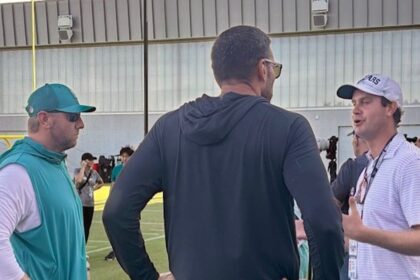The Los Angeles Lakers faced heavy criticism for letting Dorian Finney-Smith leave as a free agent. Initially acquired in a trade involving D’Angelo Russell, Maxwell Lewis, and three second-round draft picks, Finney-Smith quickly became a fan favorite in Los Angeles after just 43 games. Many believed his value would increase, especially after the Lakers dealt with Luka Dončić. However, Finney-Smith declined a $15.4 million player option and instead signed a four-year contract with the Houston Rockets.
Fans were upset when Finney-Smith was allowed to walk away for nothing, but the Lakers remained firm in their decision and aimed to strengthen the roster in other ways. Their first move was signing Jay LaRavia from the Sacramento Kings on a two-year, $12 million deal. Then, the Lakers addressed a key position gap by signing former No. 1 overall pick Deandre Ayton to a two-year, $16.6 million contract after acquiring him from the Portland Trail Blazers.
Evaluating these moves, the Lakers deserve credit. In today’s NBA, it’s crucial to manage payroll cleverly to avoid luxury tax penalties, and General Manager Rob Pelinka executed this by replacing Finney-Smith with LaRavia and Ayton at a more affordable combined salary of $14.3 million for the 2025-26 season. This switch saves the Lakers $1.1 million in cap space and brings a more balanced roster.
While Finney-Smith, who is 32, offers little offensively, LaRavia and Ayton bring youth and versatility at ages 23 and 26, respectively. This approach positions the Lakers better for sustained competitiveness over the long term, balancing cost savings with roster depth.
—
Fan Take: This strategic roster reshuffling by the Lakers highlights the increasing importance of smart salary management in building competitive teams. For basketball enthusiasts, it illustrates how younger, versatile talent can rejuvenate a franchise while keeping financial flexibility intact, potentially impacting player movement trends across the league.



